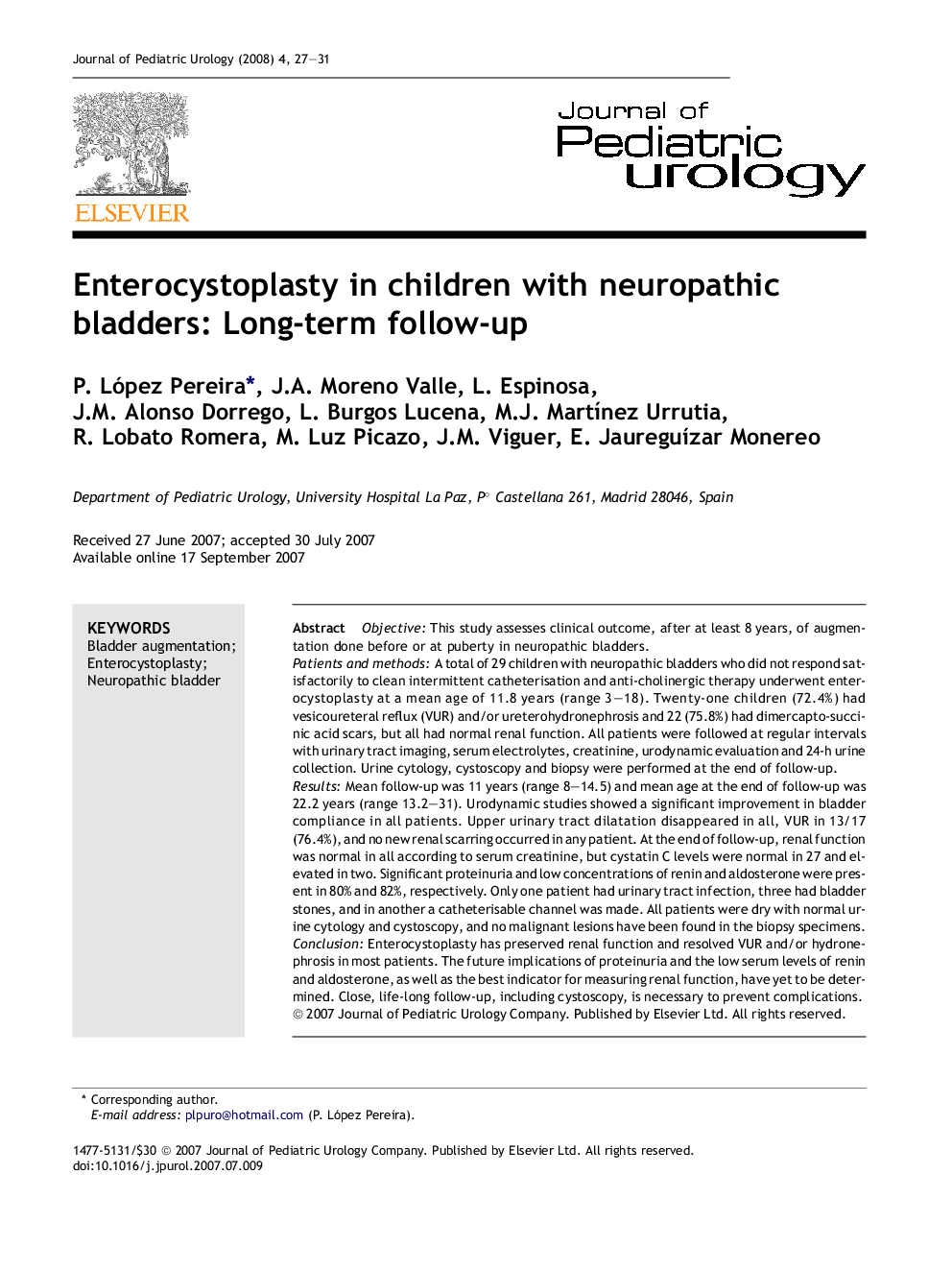| Article ID | Journal | Published Year | Pages | File Type |
|---|---|---|---|---|
| 4164147 | Journal of Pediatric Urology | 2008 | 5 Pages |
ObjectiveThis study assesses clinical outcome, after at least 8 years, of augmentation done before or at puberty in neuropathic bladders.Patients and methodsA total of 29 children with neuropathic bladders who did not respond satisfactorily to clean intermittent catheterisation and anti-cholinergic therapy underwent enterocystoplasty at a mean age of 11.8 years (range 3–18). Twenty-one children (72.4%) had vesicoureteral reflux (VUR) and/or ureterohydronephrosis and 22 (75.8%) had dimercapto-succinic acid scars, but all had normal renal function. All patients were followed at regular intervals with urinary tract imaging, serum electrolytes, creatinine, urodynamic evaluation and 24-h urine collection. Urine cytology, cystoscopy and biopsy were performed at the end of follow-up.ResultsMean follow-up was 11 years (range 8–14.5) and mean age at the end of follow-up was 22.2 years (range 13.2–31). Urodynamic studies showed a significant improvement in bladder compliance in all patients. Upper urinary tract dilatation disappeared in all, VUR in 13/17 (76.4%), and no new renal scarring occurred in any patient. At the end of follow-up, renal function was normal in all according to serum creatinine, but cystatin C levels were normal in 27 and elevated in two. Significant proteinuria and low concentrations of renin and aldosterone were present in 80% and 82%, respectively. Only one patient had urinary tract infection, three had bladder stones, and in another a catheterisable channel was made. All patients were dry with normal urine cytology and cystoscopy, and no malignant lesions have been found in the biopsy specimens.ConclusionEnterocystoplasty has preserved renal function and resolved VUR and/or hydronephrosis in most patients. The future implications of proteinuria and the low serum levels of renin and aldosterone, as well as the best indicator for measuring renal function, have yet to be determined. Close, life-long follow-up, including cystoscopy, is necessary to prevent complications.
